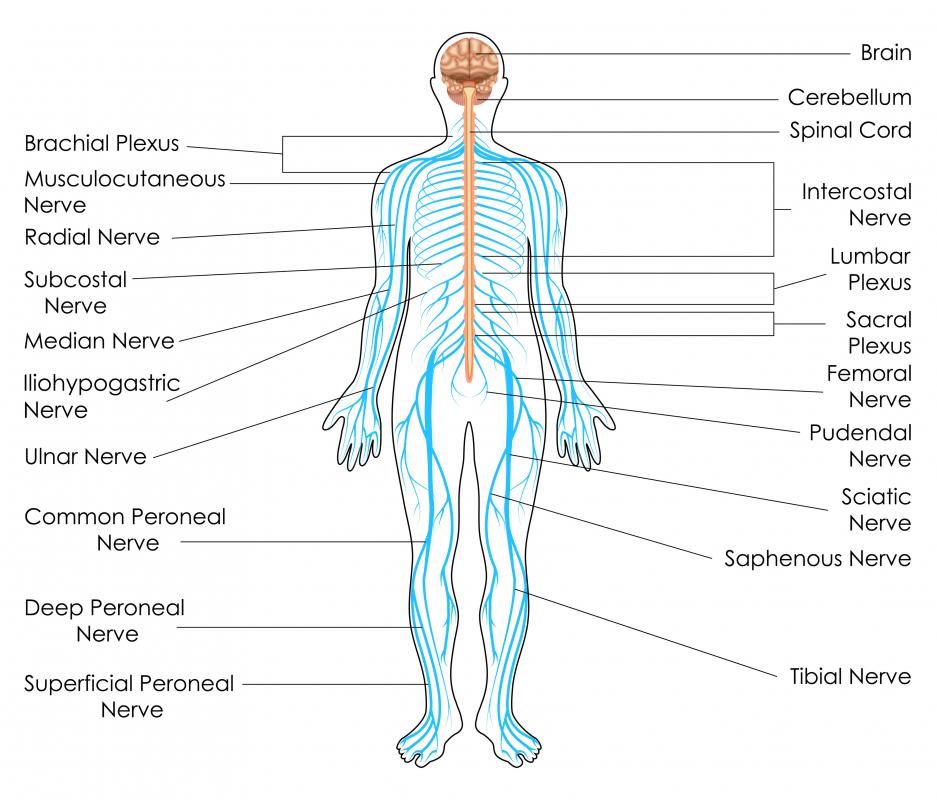At WiseGEEK, we're committed to delivering accurate, trustworthy information. Our expert-authored content is rigorously fact-checked and sourced from credible authorities. Discover how we uphold the highest standards in providing you with reliable knowledge.
What Is the Scalenus Medius?
The scalenus medius muscle is one of three muscles in the neck that link the vertebrae with the first and second ribs. It is the largest one in the group and travels the greatest distance. The muscle begins as an attachment to the backside of six cervical vertebrae, on bony extensions called transverse processes. Situated along the spine, the scalenus medius attaches to the topside of the first rib, and helps to lift the rib as well as rotate the clavical vertebrae. The other two scalene muscles are the scalenus anterior and scalenus posterior muscles.
On the first rib, the scalenus medius attaches behind a groove on the bone that leaves room for the subclavian artery. It is also situated behind a cluster of nerves called the brachial plexus, as well as behind the major artery. Control of the muscle is enabled by the cervical nerves.

Sitting close to the scalenus posterior muscle, which links the lower cervical vertebrae with the second rib, the scalenus medius is physiologically combined with this muscle in some people. The posterior muscle is the smallest in the group. It is also located the deepest inside the body. Like the medius, the scalenus anterior muscle sits in the neck and attaches to the cervical vertebrae on one end and to the first rib, via a tendon, on the other end.

Sometimes the scalenus muscles can be fused, or wrap around nerves or blood vessels. This is usually not significant, but if a band of muscle wraps around parts of the brachial plexus, chronic pain in the neck or arm can be problematic. How the muscles are situated in relation to other anatomic structures is also important for surgeons to know before and during operations. Anatomical variations from person to person can affect how a surgeon works and how anesthesia is applied to nerves in the brachial plexus.

Scalenus medius muscles can also vary in how many bones they attach to in the vertebral column. Most of the variations in these muscles have no consequence, except when they cause pressure on nerves or constrict blood vessels. The exact nature of such a problem is difficult to diagnose without surgery. Anatomically, the scalenus muscles are important in the movement of the neck and the upper ribs. Their proximity to major arteries and nerves is a consideration that many physicians have when they suspect a wide variety of neck and upper arm problems.
AS FEATURED ON:
AS FEATURED ON:













Discuss this Article
Post your comments